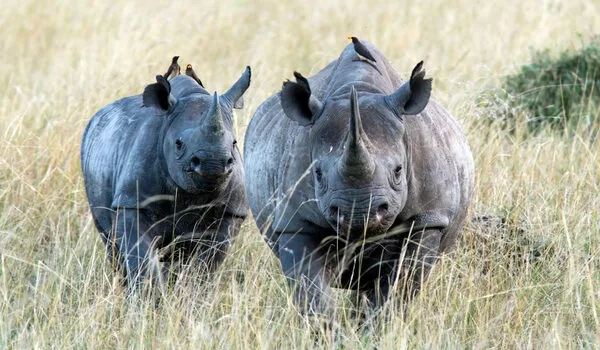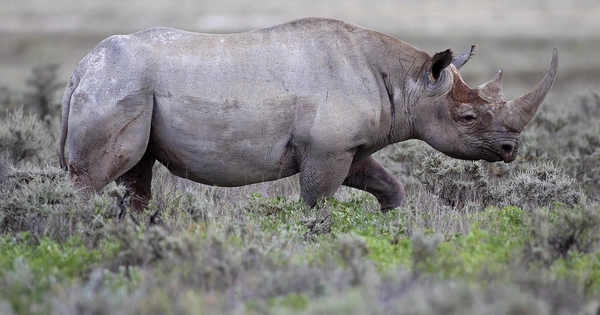Feces analysis, also known as fecal genotyping, can provide valuable insights into white rhino populations and help increase their numbers.
North Carolina State University researchers discovered significant differences in the gut microbiome of female southern white rhinos that are reproducing successfully in captivity versus females that are not reproducing successfully in captivity. The findings raise concerns about the potential role of a specific genus of gut microbes in limiting captive breeding of this rhinoceros species.
“Our work focuses on the southern white rhinoceros (Ceratotherium simum simum), because while it is not yet endangered, species numbers in the wild are declining due to poaching,” says Christina Burnham, first author of the paper and a former graduate student at NC State.
“There is a significant population of southern white rhinos in human care in the United States, but many of these animals have had difficulty reproducing successfully.” It is critical that we understand why, because managed rhino populations serve as important assurance populations in the event that wild rhino numbers continue to decline. “We wanted to know how the rhinos’ gut microbiome might influence their reproductive ability.”
Our work focuses on the southern white rhinoceros (Ceratotherium simum simum), because while it is not yet endangered, species numbers in the wild are declining due to poaching.
Christina Burnham
To that end, the scientists collected multiple fecal samples from eight female southern white rhinoceroses over a six-month period. The study population included two juveniles, two “subadults” who are no longer nursing but are not yet of reproductive age, two adults who had successfully reproduced, and two adults who had not successfully reproduced.
“We wanted a large sample size that would allow us to assess the gut microbiome of females in this species while controlling for age, time of year, and reproductive status,” Burnham explains.
The researchers extracted and sequenced DNA from fecal samples, allowing them to identify the diversity and abundance of bacteria in the guts of the study animals.

“We found differences between rhinos in each age group,” says co-author Erin McKenney, an assistant professor of applied ecology at NC State. “In other words, the gut microbiome’s microbial communities change predictably as animals age from juveniles to subadults to adults.” This is most likely due to changes in the animals’ diet and behavior, among other things. This type of microbiome’succession’ occurs in many animal species. And it’s significant here because it highlights the differences we discovered between reproductively successful adults and reproductively unsuccessful females.”
The researchers found that reproductively successful females had less diversity in the types of microbial species present in their gut microbiome, when compared to the microbiome of reproductively unsuccessful females. The researchers also found that each group of adults was playing host to microbial species that have previously been associated with reproductive health.
“One of the microbial families we found at significant levels in reproductively successful adults was Rikenellaceae,” says Burnham. “This is significant because Rikenellaceae has previously been proposed to play a role in assisting southern white rhinos in breaking down dietary plant compounds, including phytoestrogens known to limit reproductive success.”
“On the other hand, we only found significant enrichment of Mobiluncus microbes in adults who were unable to reproduce,” Burnham says. “Previous research has linked Mobiluncus to a variety of reproductive health issues in a variety of non-rhinoceros species.”
“However, Mobiluncus was found in cervical and vaginal microbiomes in previous studies.” We only looked at the gut microbiome. We hypothesize that the gut is a reservoir for Mobilincus, but we need to collect cervical or vaginal swabs from the adult females we studied to see if Mobilincus is present in those microbiomes.”
“Because this was a longitudinal study, we collected multiple samples from each animal over the course of a half-year,” McKenney explains. “And the differences we saw in the gut microbiomes of adult females were consistent over time, implying that these differences in microbial communities may be important in these animals’ reproductive health. That said, we will need to do additional research to determine what that role may be, if any.”





